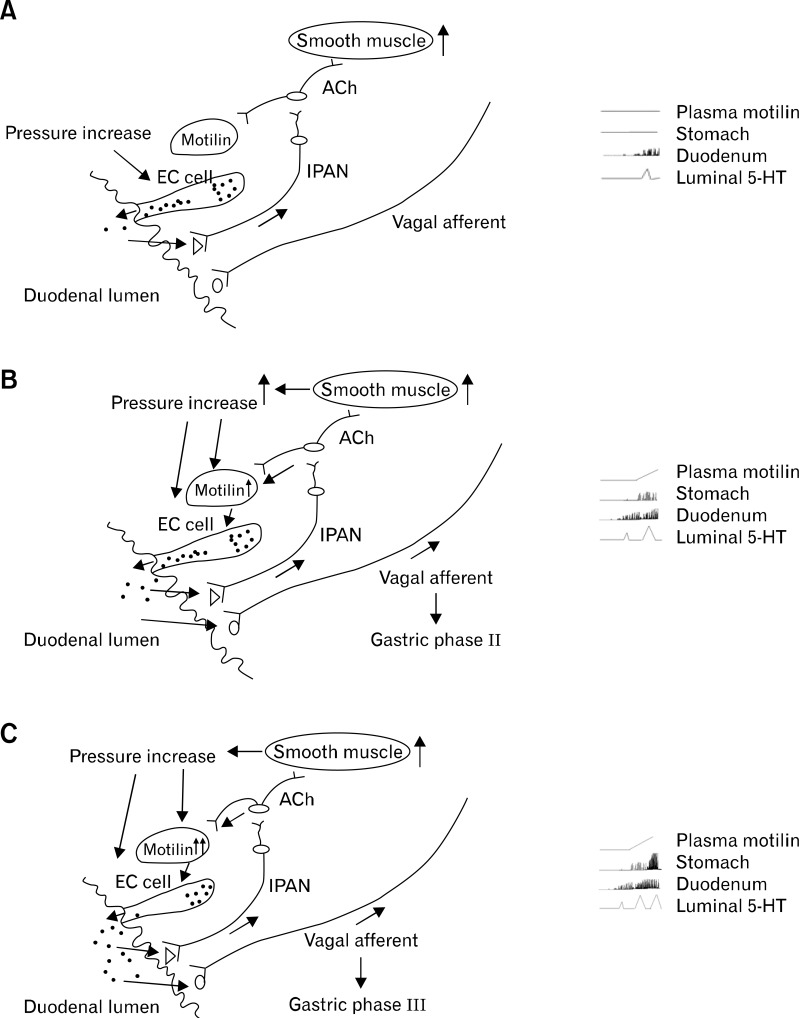Figure 4.
Possible mechanism of gastrointestinal migrating motor complex during gastric phase I (A), phase II (B) and phase III (C). During gastic phase I, the basal secretion of gastric, pancreatic and biliary juices gradually increases the luminal pressure of the duodenum (A), resulting in 5-hydroxytryptamine (5-HT) release from enterochromaffin cells. Released 5-HT initiates duodenal phase II via 5-HT4 receptors of intrinsic primary afferent neurons (IPAN) (A). Duodenal phase II causes further increase of duodenal pressure, which stimulates more 5-HT release. This positive circuit (pressure increase and 5-HT release) gradually enhances the amplitude of duodenal phase II, leading to duodenal phase III. Finally, maximally increased duodenal pressure stimulates motilin release (B). Released motilin stimulates large amounts of 5-HT release which acts on 5-HT3 receptors of vagal afferent, in addition to 5-HT4 receptors of IPAN. Released motilin induces gastric phase III via vago-vagal reflex61 (C). Black dots indicate 5-HT granules/particles. Open triangle indicates 5-HT4 receptors and open circle indicates 5-HT3 receptors. ACh, acetylcholine; EC cell, enterochromaffin cell.

